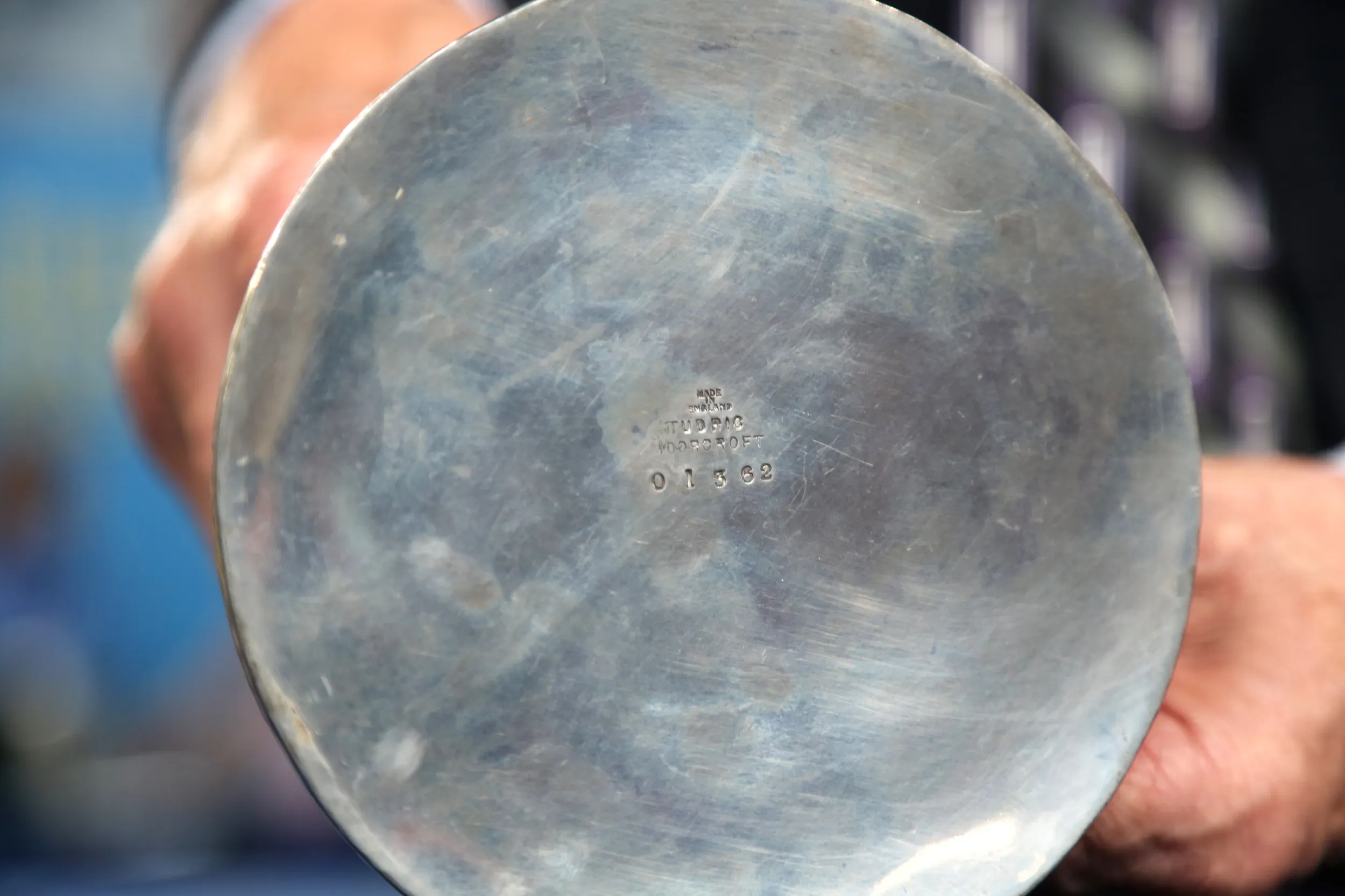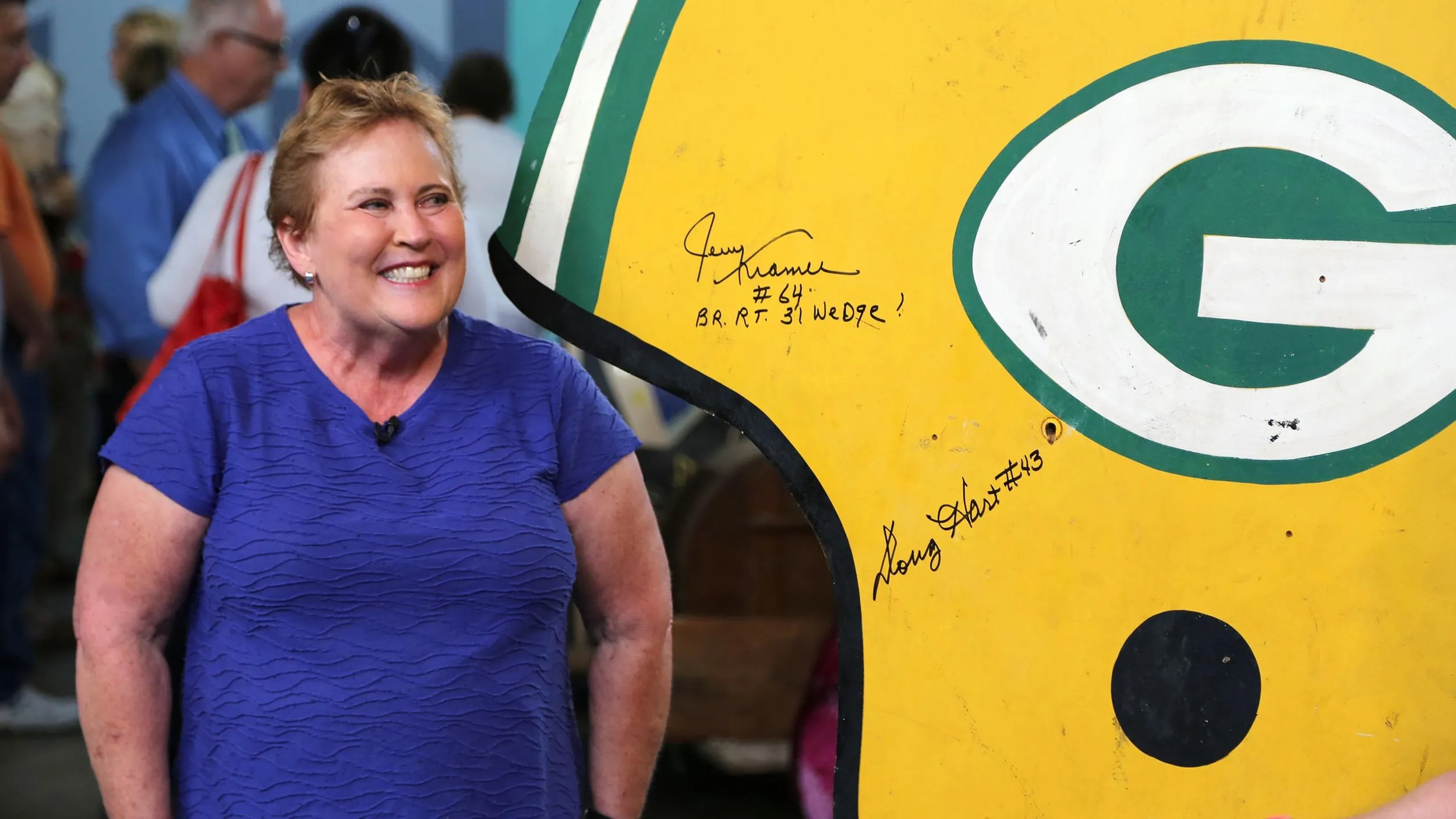GUEST: My mother must have bought these candlesticks at some kind of a sale, I believe in 1981. My father really liked blue-- it was his favorite color, and he really loved blue-green together. So, but they were never displayed in the home, and when I cleaned out our house after their death, I found them in a box in the vegetable pantry in the basement.
APPRAISER: Really? That's cool.
GUEST: And actually, I almost threw them out, because they were stuffed into an old blender box.
APPRAISER: Wow.
GUEST: Then I opened it, and I found them.
APPRAISER: I'm glad you didn't throw them out. That's good. (laughs) So you know what they are.
GUEST: Well, I know they're Moorcraft, which I know is a very nice form of pottery, but I really don't know how old they are or what they're worth. They seem to be kind of different, because they're both ceramic and metal at the same time. I know hammered aluminum was very popular in the 1950s, and my mom had a lot of it around the house, but the coloring and the way the trees are, I know that can be much older than that. So it doesn't seem like they fit together, and I didn't know how old they were.
APPRAISER: Okay. Well, they fit together very nicely. The company is actually Moorcroft, C-R-O-F-T.
GUEST: Okay.
APPRAISER: And these are a combination of Moorcroft Pottery and Liberty and Company pewter.
GUEST: Oh, okay.
APPRAISER: Hammered pewter.
GUEST: So it's not aluminum, it's pewter.
APPRAISER: No, no.
GUEST: Okay.
APPRAISER: It's better than aluminum. These probably date from around 1930. Okay. And the ceramic itself is a pattern called "Moonlit Blue." It's a beautiful blue with green. There are several landscape patterns that Moorcroft made that are very popular with collectors, and Moonlit Blue is one of the more popular. It's just very beautiful.
GUEST: It's beautiful, right.
APPRAISER: These are interesting in a way because they're actually slightly different. The trees on this one are a little shorter. Okay. But nonetheless, that gives them a little more individuality. But they're really, really very pretty. Moorcroft used patterns to make these pieces, and usually, you will see similarities in the pieces, but they can be somewhat different because of the application of the color. And what we know about Liberty, we can look on the bottom, it says "Made in England, Tudric." That's the name that Liberty used on their pewter products.
GUEST: Oh, okay.
APPRAISER: And they made a lot of hammered pewter. Very collectible in the United States and in England. There's a possibility that they would bring more in the United Kingdom or in Australia, hard to say. I would say, in a retail setting, these would be about $3,000 for the pair.
GUEST: Oh, my gosh. (laughs)
APPRAISER: Well, they're very nice.
GUEST: Right-- oh, my gosh. I'm definitely glad I salvaged them from the basement!
APPRAISER: I'm glad you didn't throw them away. That would've been bad.





